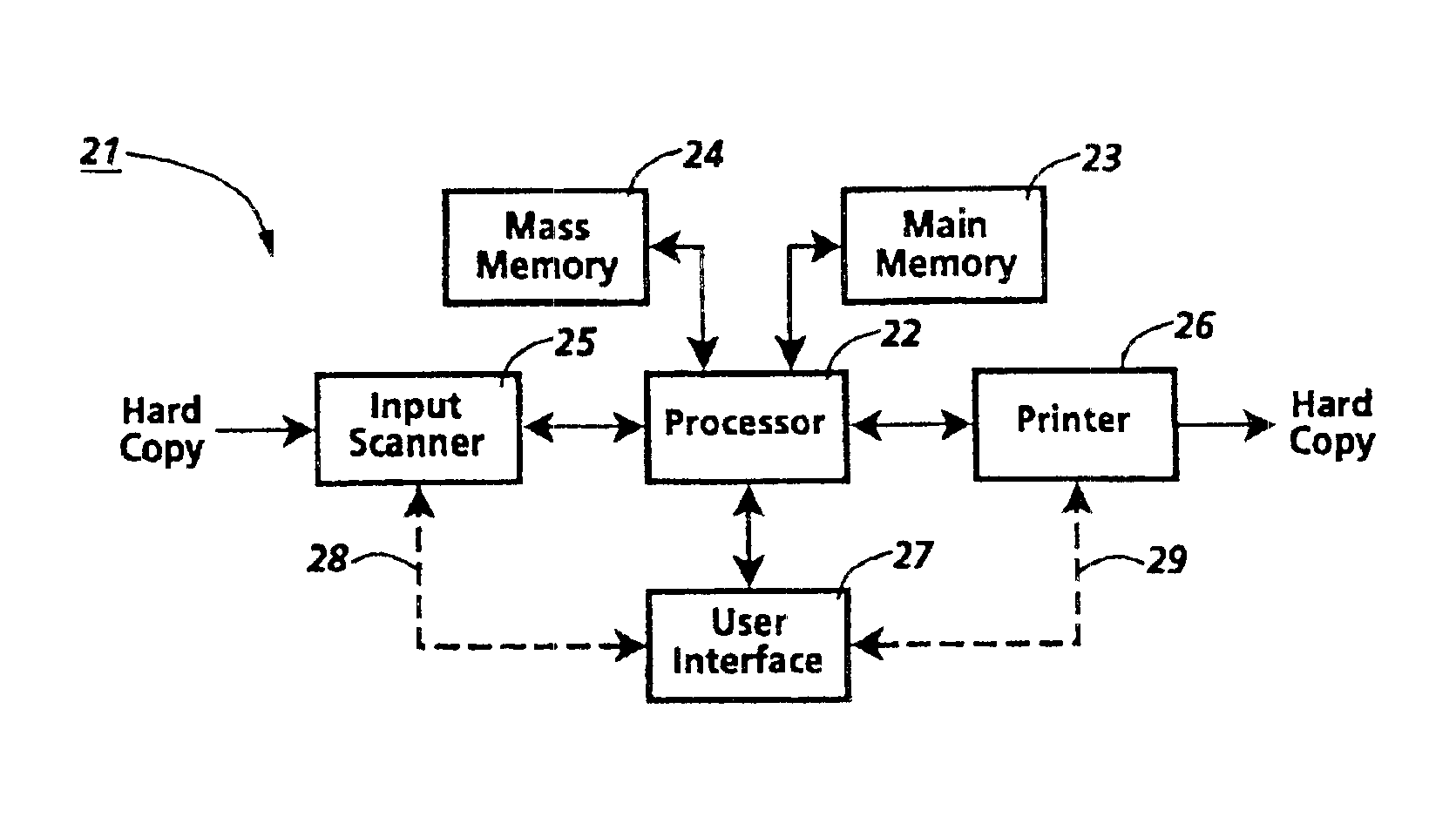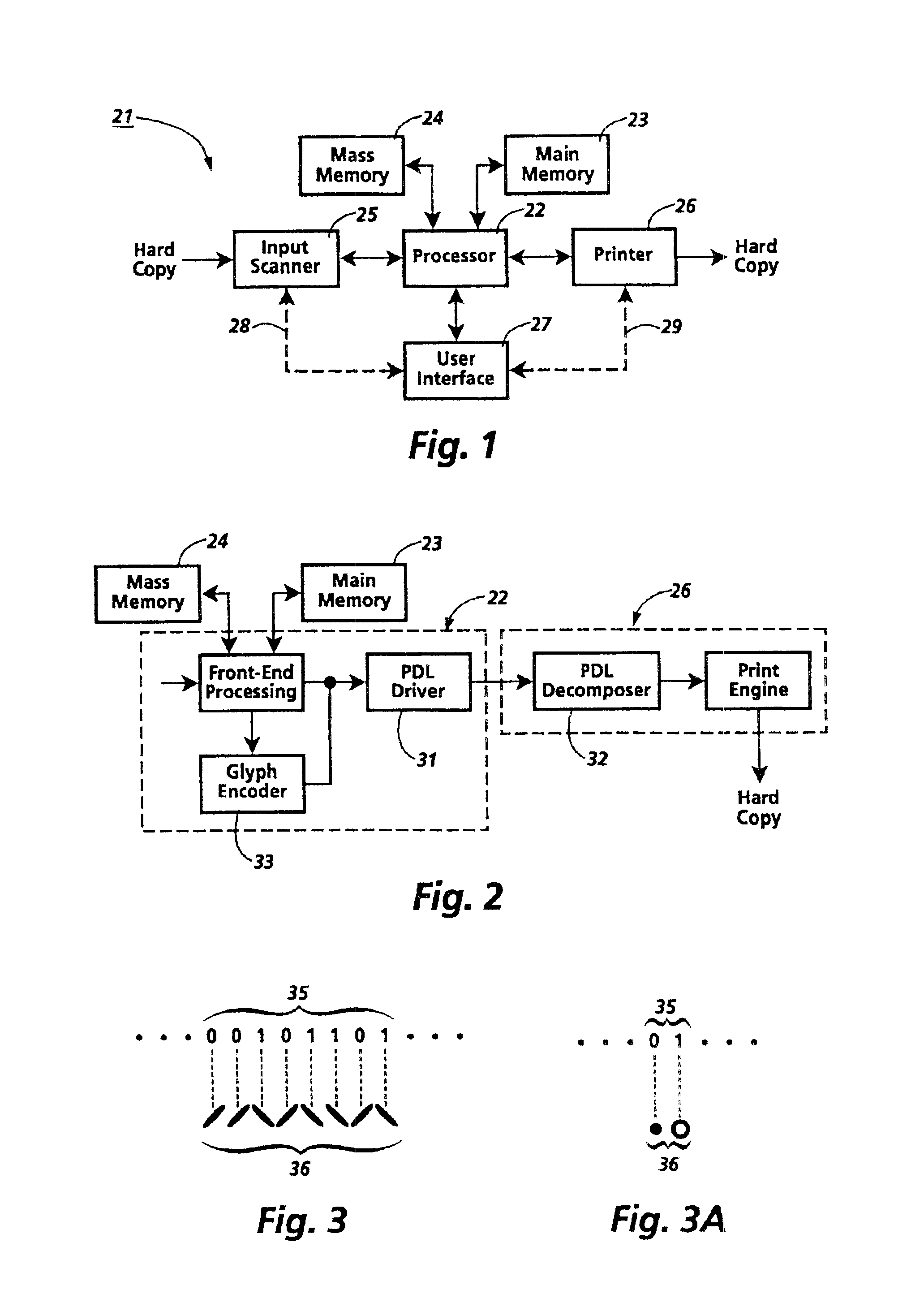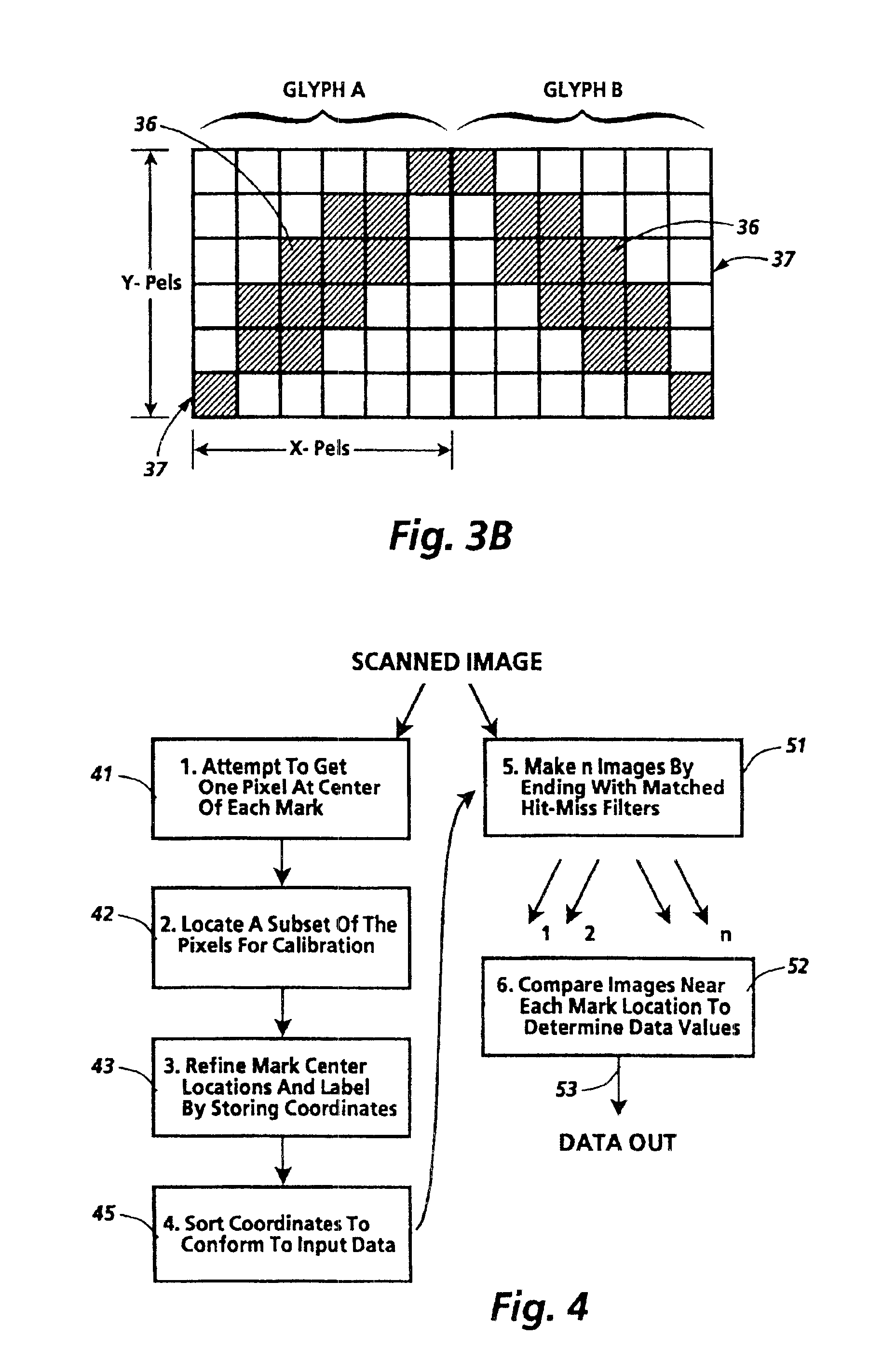Self-clocking glyph shape codes
a technology of glyphs and codes, applied in the field of self-clocking codes, can solve the problems of aesthetically objectionable to some observers, and the overhead that they consider codes, and achieve the effect of uniform textur
- Summary
- Abstract
- Description
- Claims
- Application Information
AI Technical Summary
Benefits of technology
Problems solved by technology
Method used
Image
Examples
Embodiment Construction
[0038]While the invention is described in some detail hereinbelow with specific reference to certain embodiments, it is to be understood that there is no intent to limit it to those embodiments. On the contrary, the aim is to cover all alternatives, modifications, and equivalents falling within the spirit and scope of the invention as defined by the appended claims.
A. An Exemplary Environment
[0039]Turning now to the drawings, and at this point especially to FIG. 1, there is an electronic document processing system 21 to illustrate a typical environment for this invention. In keeping with standard practices, the document processing system 21 comprises a digital processor 22 having a main memory 23 and a mass memory 24, an input scanner 25 for scanning digital representation of selected hardcopy documents into the processor 22, and a printer 26 for printing hardcopy renderings of selected ones of the files that are listed on the file directory (not shown) of the processor 22. Furtherm...
PUM
 Login to View More
Login to View More Abstract
Description
Claims
Application Information
 Login to View More
Login to View More - R&D
- Intellectual Property
- Life Sciences
- Materials
- Tech Scout
- Unparalleled Data Quality
- Higher Quality Content
- 60% Fewer Hallucinations
Browse by: Latest US Patents, China's latest patents, Technical Efficacy Thesaurus, Application Domain, Technology Topic, Popular Technical Reports.
© 2025 PatSnap. All rights reserved.Legal|Privacy policy|Modern Slavery Act Transparency Statement|Sitemap|About US| Contact US: help@patsnap.com



